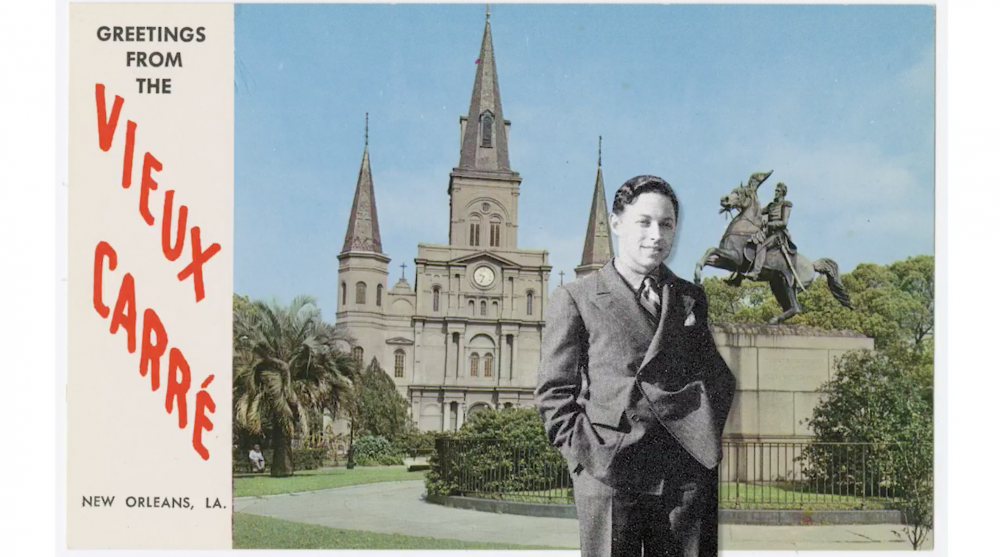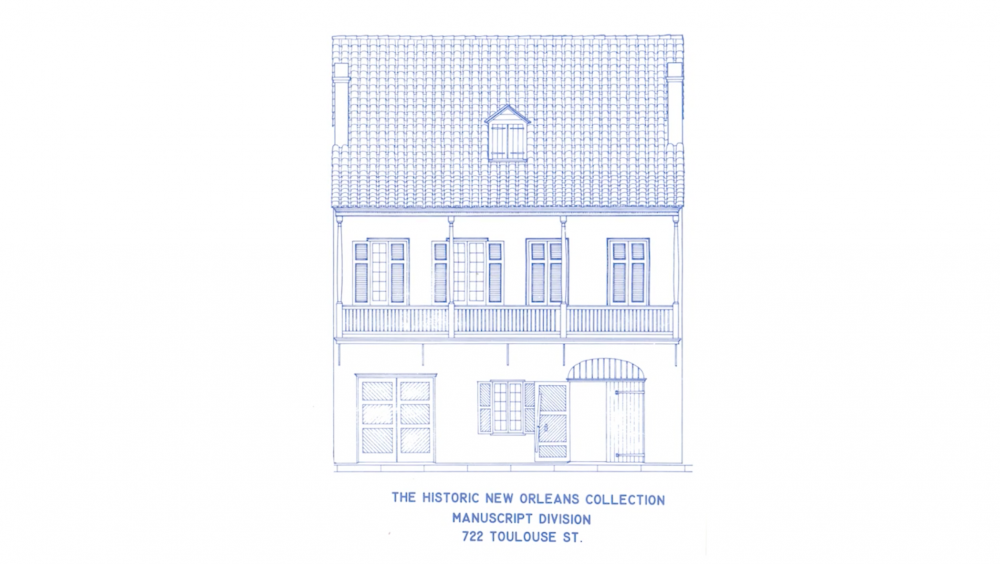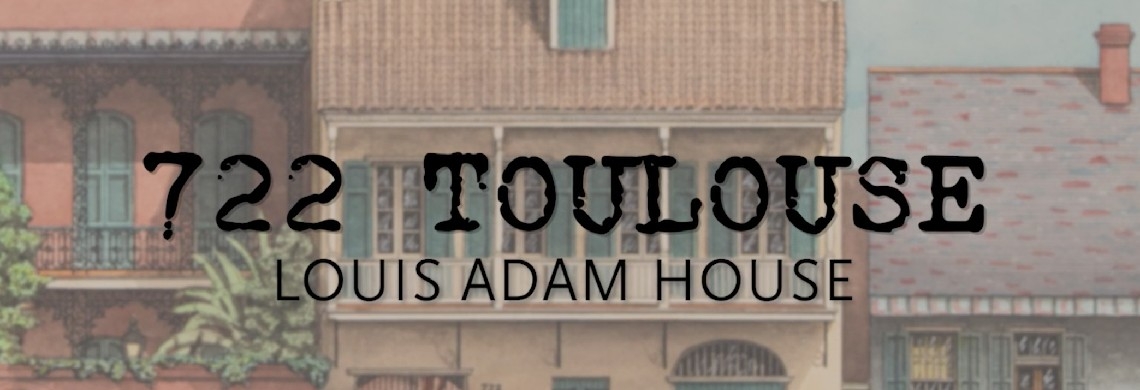In a new YouTube video, The Historic New Orleans Collection provides a behind-the-scenes look at 722 Toulouse Street, Tennessee Williams’s first residence in New Orleans when he arrived in 1938. Located in the heart of the French Quarter, the building—known as the Louis Adam House—is owned by THNOC and houses offices for its exhibition-preparation department. It is not open to the public; however, this video gives viewers a look at what those offices—as well as the attic where Williams used to live—look like today.
A full transcript is reproduced below. This video is presented in conjunction with Backstage at “A Streetcar Named Desire,” an exhibition celebrating the iconic play’s 75th anniversary.
Transcript
Backstage at “A Streetcar Named Desire,” an exhibition on display at The Historic New Orleans Collection, celebrates the 75th anniversary of the play’s Broadway debut. To extend the experience beyond our gallery walls, we created a new walking tour on our French Quarter app. The tour takes visitors to significant locations from the play and Tennessee Williams’s life in the Quarter.
We had to limit how many destinations we added to the tour, so one location you won’t see on the app, but you can find around the corner from the exhibition, is 722 Toulouse Street, a building known as the Louis Adam House. This building was operated as a rooming house in the late 1930s, when a young playwright named Thomas Lanier Williams rented an attic apartment for ten dollars a month.
The two-story masonry house was constructed in 1788 by cabinetmaker and militiaman Louis Adam. In 1805 Adam’s widow sold the property. After changing hands several times, it was eventually purchased by Joseph Guillot, a prominent architect-builder. Guillot and his partner Claude Gurlie made improvements and sold the property in 1810 for a price indicating a substantially enlarged structure.
Over the years, the house gradually lost its colonial exterior as it was sold and resold many times. By the 1930s, the house was characteristic of changes in the French Quarter in the early 20th century, when many houses were subdivided into rooming houses and low-rent apartments.
Twenty-seven-year-old Tom Williams arrived in New Orleans from St. Louis in December 1938. He had only recently begun using the pen name Tennessee Williams.

Shortly after his arrival, he moved into 722 Toulouse, which he described in a letter to his grandparents as a house “owned by a lovely Mississippi lady.” In another letter, he described the tenants as “musicians, artists, and salesmen—all quite respectable.”
Early in Williams’s stay, his landlady, Mrs. Anderson, opened a restaurant in the building called the Quarter Eat Shop. Williams worked as waiter, cashier, host, and publicity manager, inventing the restaurant’s slogan, which he handed out on cards to passersby: “Meals in the Quarter for a quarter.”
The restaurant, however, was short-lived.
Williams sought employment with the New Orleans division of the Federal Writers’ Project, a Depression-era program to assist out-of-work writers. He hoped to have his play Battle of Angels produced. These efforts never materialized, though the play would premiere in Boston two years later.
While living at 722, Williams began a play entitled “Dead Planet, the Moon!” based on his experiences in the rooming house. The draft was revised several decades later into the 1977 production Vieux Carré. Williams set other works at 722 Toulouse as well, including the short stories “The Lady of Larkspur Lotion” and “The Angel in the Alcove.”
In February 1939 Williams left New Orleans on a road trip to California. In a 1971 interview he claimed to have escaped his garret “owing $50 by sliding down on a string of bed sheets”—likely a romanticized recollection.
Williams would return to New Orleans two years later, following the disappointing premiere of Battle of Angels, his first major play. He would return to the city again and again throughout his life, claiming to find freedom and independence in New Orleans that gave sustenance to his life and art.
As for the Louis Adam House, in 1945 the building was purchased by Kemper and Leila Williams, founders of The Historic New Orleans Collection. In the 1970s the building was restored to its original Spanish colonial style, guided by archival drawings that showed a wood gallery supported on iron consoles and a high-pitched, clay tile roof. In 1978, it became home to the manuscripts division of The Collection.

Today the building continues to house Collection offices, so it is not open to the public. However, to celebrate the opening of Backstage at “Streetcar,” we’re giving you a rare glimpse behind the scenes of what 722 Toulouse looks like in 2022, 83 years after Williams lived in the apartment he called “the poetic evocation of all the cheap rooming houses of the world.”
But first! On the first floor, in space once used as studio apartments in the 1930s, are offices for the facilities department and the preparators’ workshop. Preparators are responsible for building exhibitions, including constructing mounts, framing art, and generally doing all the physical labor required to make an exhibition possible. On the second floor, there are additional offices for the prep department.
And now, the moment you’ve been waiting for! This staircase is the original one that Williams would have used when he lived here. The third-floor attic is now home to something that is very, very important in New Orleans . . . air conditioning! The attic that was once probably filled with sparse furnishings, a typewriter, and piles of notebooks now helps keep our staff cool in the summer and warm in the winter.
So now you know why you can’t “see inside” when you walk past – there isn’t much to see here! What there is to see are our exhibitions just around the corner at 520 and 533 Royal Street. We also house an extensive collection of manuscripts, photographs, and memorabilia related to Tennessee Williams, available to view in our research center at 410 Chartres Street.
Backstage at “A Streetcar Named Desire” is on display through July 2022, and the French Quarter walking tour app is available for free on both Apple and Android smartphones.












